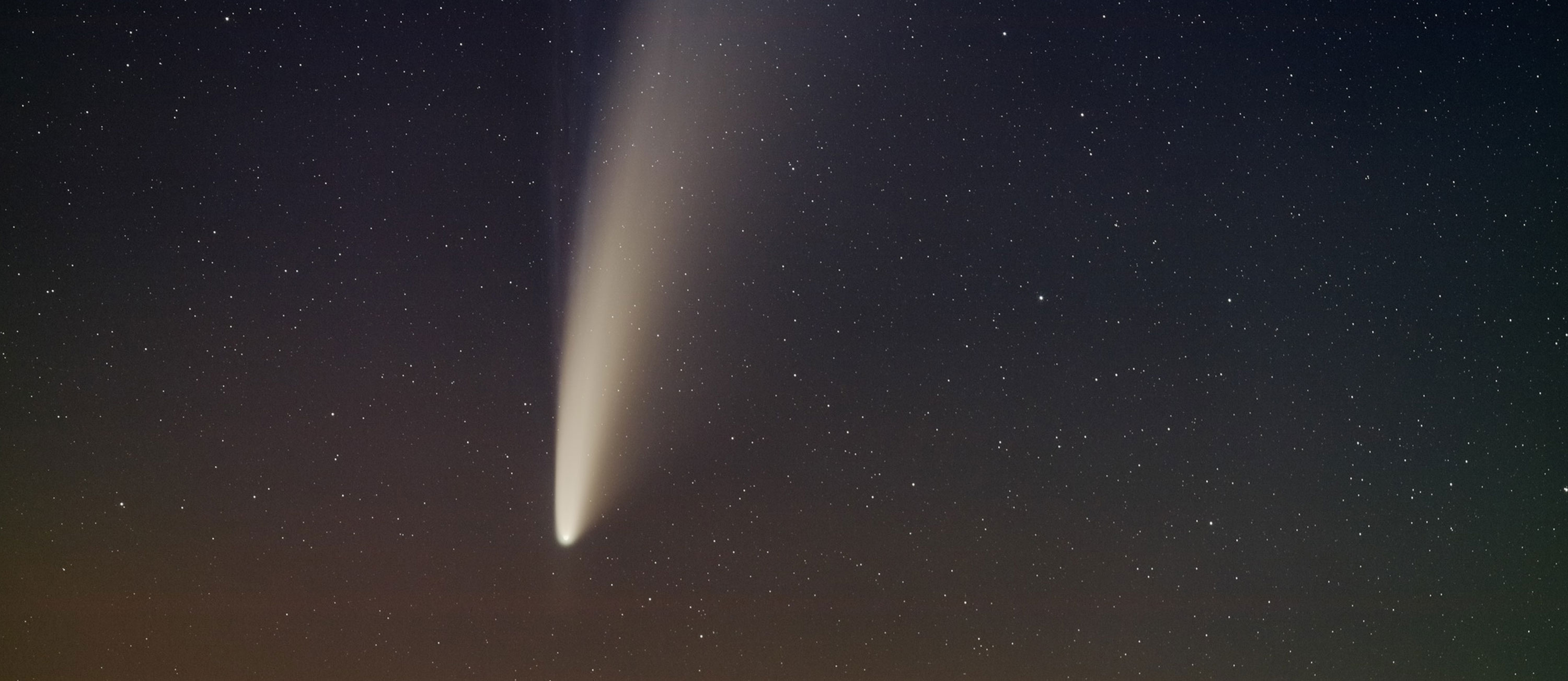
Spectacular Show for Stargazers

Stargazers take note! The night sky has something unusual to offer at the moment. Over the coming days, the comet Neowise will make its closest approach to the Earth. In fact, it’s already so close to us that it is visible with the naked eye. Encounters between the Earth and this comet take place only once every 70 centuries. The best time to view it is at around 3 in the morning, when it can be found in the north-northeastern sector of the sky. At its point of closest approach to us on July 23, Neowise will be only about 103 million kilometers from our home planet.
Comets like Neowise are remnants of the process that gave rise to our solar system approximately 5 billion years ago. They consist of a mélange made up of rock, dust and frozen gas, and astronomers often refer to them as ‘dirty snowballs’. When these celestial wanderers impinge on our solar precinct, solar radiation causes the frozen gases to evaporate, giving rise to the characteristic tail. This explains why the tail of an approaching comet always points away from the Sun. However, depending on their precise trajectories, after passing through perihelion (the point of closest approach to the Sun) and swinging away again, comets may end up chasing their tails.
Not so very long ago, Neowise was completely unknown. It was only discovered in March of this year by NASA’s space telescope WISE (the ‘Wide-field Infrared Survey Explorer’). In early July, Neowise reached its perihelion, racing past the Sun at a speed of some 280,000 km/h. Within a few thousand years, the comet will have reached a distance of 100 hundred billion km from our star. By then, its velocity will have been reduced to that of a family car on an ordinary road.
If you want to observe Neowise’s far more hectic current traverse through our own neck of the woods (in astronomical terms), you can do so over the next few days by scanning the northern reaches of the night sky. With the naked eye, the comet appears as a diffuse star-like point of light, of medium brightness, which is associated with a faint, upwardly directed ‘train’ of light whose length is approximately equivalent to that of the diameter of the full moon. With binoculars, the tail can be discerned significantly more clearly. The golden sheen of the comet’s core can just be seen just above the horizon. In the early hours of the morning, the tail is then gradually lost in the rays of the rising Sun.
Photographers who wish to capture the unusual spectacle will have to experiment with a range of exposure times. But even with a smartphone, one has a chance of getting an attractive snap. During the next two weeks, Neowise can best be seen at evening, but its brightness will gradually fade, before the visitor vanishes once again into the depths of outer space.












